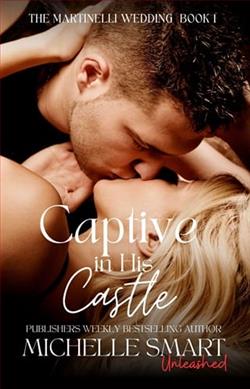Page 43 of Just Like Starting Over
Sierra looks between them. “The kind with the big leaves. That’s what Merrie likes.”
“Genoese,” Mike says, then reads. “It’s prone to fusarium wilt, which is easy to get in a greenhouse, especially one open to the elements on good days. So, you’ll want to look for varieties that are resistant to that.”
“Can’t I choose them later?”
“But the variety you choose is going to determine how you plant it, maybe even when, and what your yields might be like.”
“And that will help you decide how much to plant,” Rupert adds.
“You’ll want to ask Merrie how much she thinks she can use per week,” Mike says.
“And you might have to do multiple plantings per season,” Rupert contributes. “I plant cilantro every third week fromMay on. You just can’t hold it in the heat. It’s better to start with new plants at regular intervals.”
“Leaf lettuce is like that, too,” Mike says and Rupert nods.
“Slow up!” Sierra says, her thumbs flying over her phone.
They don’t.
“And you can forget spinach in the summer,” Rupert says. “It’s better to plant two crops, spring and fall, since it likes cooler nights.”
“Maybe three if the season is long.”
“Or if you can lengthen it with glass or plastic tunnelling.”
If they think they’re going to intimidate Sierra with all this information, they’ve both got it wrong. She already has her stubborn look, the one she gets when she’s determined to solve something. “Where do I research that?” she demands, and Mike gives her a list of website urls. She types as quickly as he recites them, saving them for later.
“You might have to use a book,” Rupert says. “Or a catalogue. I’ll lend you a few.”
“That would be awesome. Thank you!”
Mike glances up as a bee flies right past his face, watching it head toward the blooms on the tomato plants.
“Wait. You have bees in here?” Sierra demands. “On purpose?”
“You need them for pollination,” I say, because I know that much. “Otherwise, there’d be flowers but no fruit.”
Mike shrugs. “Technically, a lot of the hybrids we grow are self-pollinating, so there’d be some fruit even without bees. The plants are more productive when there are bees, though.”
“I did a project on bees and the environment. We need bees.”
“They’re important,” Mike agrees.
“And they come inside by choice?” she asks Rupert.
“If there’s a reason,” Rupert says. “My greenhouse isn’tcontrolled like the ones Mike manages. I open the doors and the vents on sunny days, and there are no screens. See in this back corner? I plant some flowers for the bees.” I recognize the purple coneflower, but there are a number of annuals, too. “It gives them a reason to visit, then once they’re here, they see what else I’ve got.” He nods. “And I need them. The heritage varieties I’m trying out this year don’t self-pollinate.”
“Bees for the win,” Sierra says and he grins.
“Exactly.” Rupert nods toward the hives we can barely make out on the far side of his fields. “Wouldn’t be here without the bees.”
Sierra studies them for a long moment, then turns to Mike. “And you have bees?”
“Definitely. Sounds weird, but we buy hives of bees. Seven hives per hectare. Then we check the flowers to make sure that our bees are as busy as they should be.”
More math. Sierra is delighted. “Why wouldn’t they be?”
“They might be sick or have a parasite in the hive. They might not be flourishing for one reason or another. Sometimes they just don’t do well after the move. We add more bees then.”















